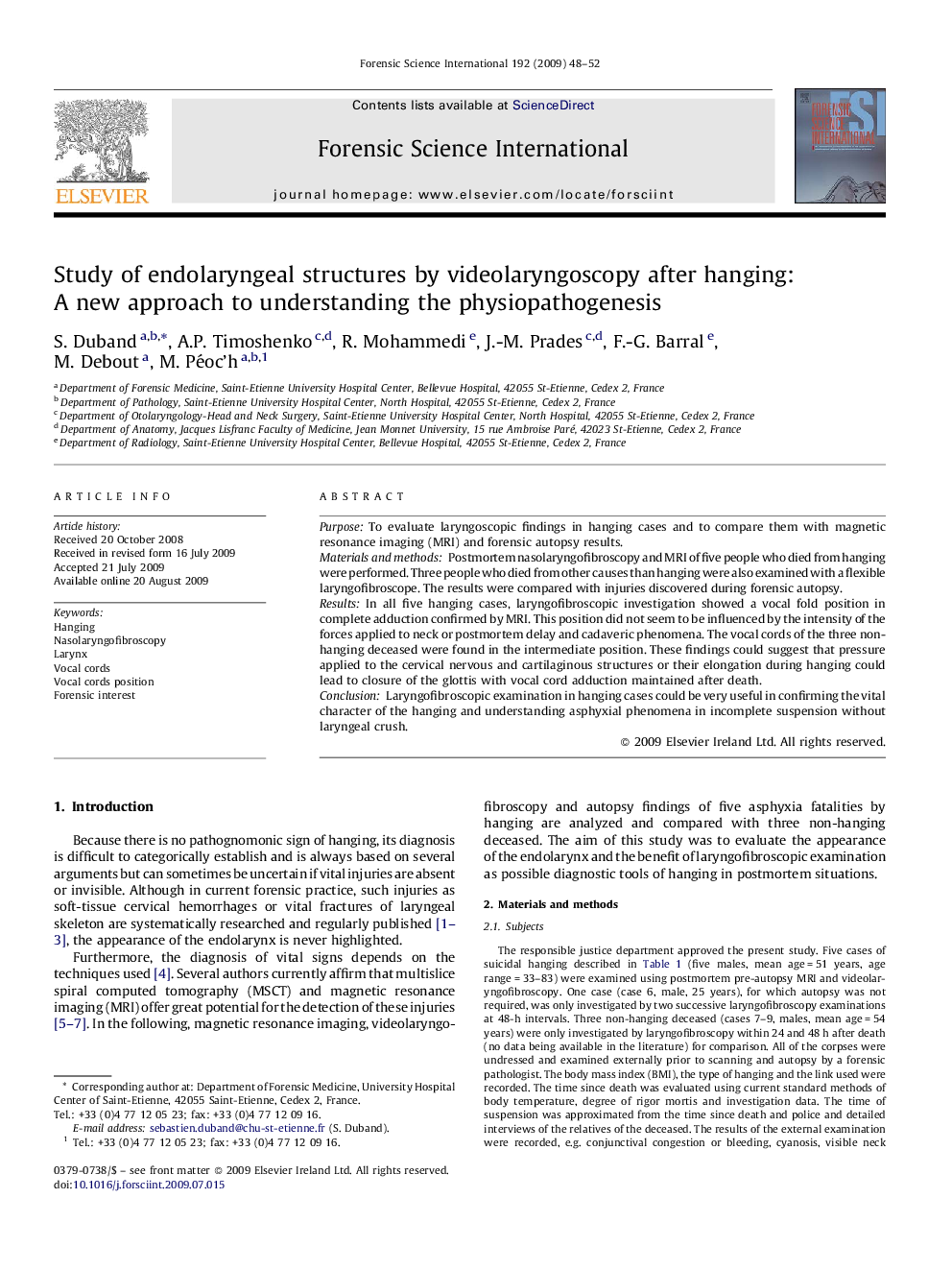| Article ID | Journal | Published Year | Pages | File Type |
|---|---|---|---|---|
| 97276 | Forensic Science International | 2009 | 5 Pages |
PurposeTo evaluate laryngoscopic findings in hanging cases and to compare them with magnetic resonance imaging (MRI) and forensic autopsy results.Materials and methodsPostmortem nasolaryngofibroscopy and MRI of five people who died from hanging were performed. Three people who died from other causes than hanging were also examined with a flexible laryngofibroscope. The results were compared with injuries discovered during forensic autopsy.ResultsIn all five hanging cases, laryngofibroscopic investigation showed a vocal fold position in complete adduction confirmed by MRI. This position did not seem to be influenced by the intensity of the forces applied to neck or postmortem delay and cadaveric phenomena. The vocal cords of the three non-hanging deceased were found in the intermediate position. These findings could suggest that pressure applied to the cervical nervous and cartilaginous structures or their elongation during hanging could lead to closure of the glottis with vocal cord adduction maintained after death.ConclusionLaryngofibroscopic examination in hanging cases could be very useful in confirming the vital character of the hanging and understanding asphyxial phenomena in incomplete suspension without laryngeal crush.
